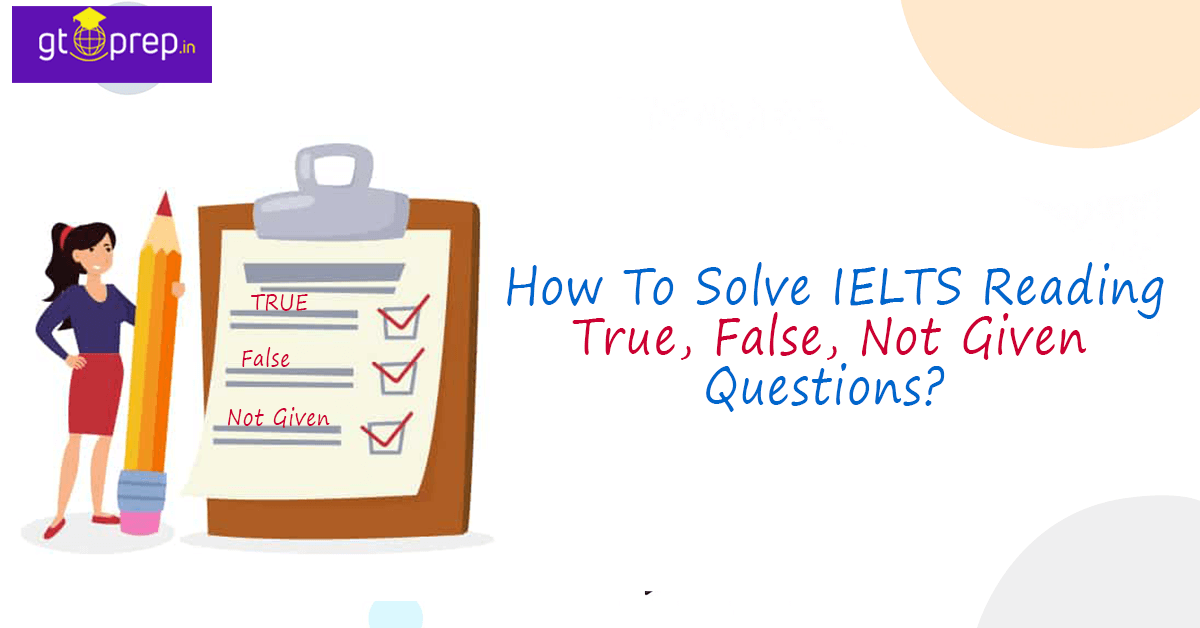IELTS Reading section is one of the challenging parts of the exam where you need to face the eleven types of reading questions where True, False, Not Given questions is confusing parts. Here in this article, you can find 5 ways to solve IELTS Reading True, False, Not given questions.
Understanding True, False, Not Given Questions in IELTS Reading Section:
True, False, or not given is a part of comprehension passages of IELTS reading. In these types of questions, a statement is present and asked to find whether the information in that statement is true, false, and not given as per the passage given or from the author’s point of view.
How to find True, False, and Not Given questions in the IELTS Reading Section?
The questions can be either of the below two formats.
1. Are the following statements True, False, or Not given as per the given passage?
OR
2. Do the following questions agree with the author’s approach in the passage?
Here you need to enter either true, false, or not given in the boxes provided.
True – If the statement agrees with the provided information.
False – If the statement doesn’t agree with the information
Not Given – If the statement is not related or sufficient information is provided in the passage.
[Read more: 7 Effective IELTS Reading Tips to Increase Your Score]
Top 5 Tips to Solve IELTS Reading True, False, Not Given Questions
1. Know the true meanings of the terms
The most common mistake by IELTS test takers is, they misunderstand the meaning behind the true, false, and not given. I know, you might think, how hard is to understand the meaning of these words. They are just true or false. But the secret tip to solve True, False, Not Given questions is to understand them properly. Get ready to get confused.
The real meanings behind the options are:
True – If you find the information from the statement agrees with the passage
False – If the information from the statement is not agreeing with the passage, check if the statement mentioned is completely contradicting the information from the passage or it is not even given in the passage. If contradicting, go with False.
Not Given – If the information is not present in the passage, then it is not given. Even though the statement seems correct, it cannot be true.
2. Never Match the words, match the meanings
While trying to understand whether the statement is related to the passage or not, never check for the exact words, instead check for the synonyms and alternative meanings. This way, the match check will be more accurate.
3. Prepare for the Paraphrase
Most of the time, the sentences will be paraphrased for the question. Both give the same meaning but look different. For this, you need to improve your vocabulary for a good IELTS score. Learn the synonyms and antonyms for as many words as possible during your IELTS preparation.
4.Can’t find it? It’s Not Given
Another important tip to remember is never wasting your time on one question. If you can’t find anything related or any word from the sentence in the passage, it is a Not given. To make it even simpler, find the keywords and look for them in the passage.
5.It is not about what you think
Never answer a question based on your opinion. It is not the place to express your views on the statement provided. So no matter what you think, answer the IELTS reading section questions based on the passage given.
Common mistakes in True, False, and Not Given questions in IELTS Reading Section:
- The test-takers often get confused for false and not given. It is one, simple logic that can boost your IELTS score. That is, if the information is there but not correct, it is false. If the information itself is not present in the passage, it is not given.
- Ignoring the words like many, some, never, few, all, always, etc can affect your score. Because these words can change the entire meaning of a sentence. So look out for them.
- Pitfalls like mentioning the 16th century in the essay and the year 1745 in the question are confusing. Basic knowledge of these kinds of data will help you escape these pitfalls.
Along with the above-mentioned tips, practice will aid in improving your IELTS reading score. If you require any tutor, you can approach our IELTS Coaching Sessions for expert guidance.



